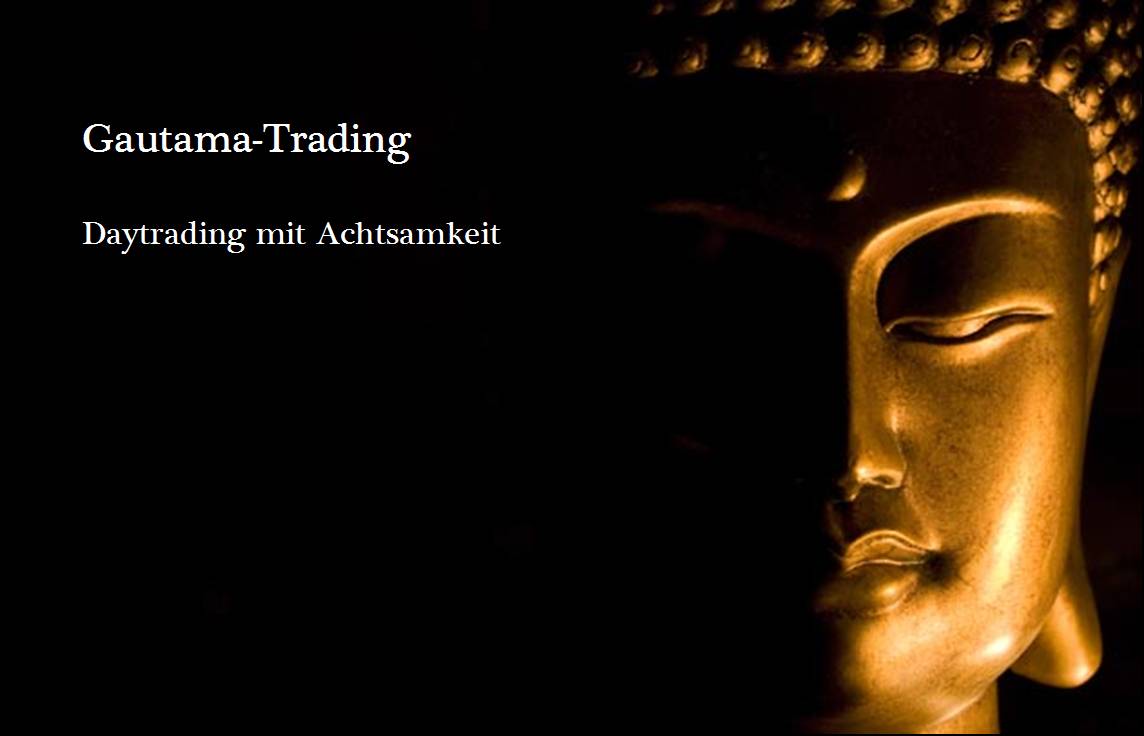Was eine Einheit bilden soll, muss der Art nach verschieden sein. (Aristoteles)
Gautama-Trading - Daytrading and coaching with mindfulness.
Gautama-Trading doesn't just reinvent trading; it refines it. By amalgamating the best practices from successful day-trading methodologies, it blends promising strategies from both trend and range markets, all while furnishing clear directives for trading decisions. With a focus primarily on tech stocks, blockchain, web3, and digital assets, Gautama-Trading fosters a rule-based approach, where money and risk management assume pivotal roles.
Inspired by elements of Buddhism, Gautama-Trading integrates its philosophy into actionable day-trading strategies, tailored for CFD indices and stock trading. Furthermore, it extends coaching services to traders who resonate with its philosophy and methodology, offering guidance and support on their trading journey.
Trading philosophy
Steering clear of delving too deeply into spirituality at this juncture, it's worth noting the foundational tenets of Buddhism, centered around the Four Noble Truths. Among these truths lies the assertion that following the Eightfold Path leads to enlightenment, or "awakening," akin to Siddhartha Gautama's transformation into the Buddha. Along this path, however, lie numerous impediments, commonly known as faults: doubt, agitation, dullness, desire, and aversion.
Interestingly, these obstacles mirror the challenges faced by aspiring traders striving for success. Recognizing this correlation, it becomes evident that seeking additional insights and leveraging the teachings of Buddhism can prove invaluable. This realization forms the bedrock of Gautama-Trading's philosophy and trading approach, incorporating profound setups and principles.
For instance, failing to adhere to one's trading plan exemplifies doubt, while over-reliance on conflicting indicators signifies agitation. Dullness manifests in neglecting daily market analysis or overlooking risk management practices like setting stop-loss orders. Desire emerges when traders neglect profit-taking or overexpose themselves to correlated positions, heightening portfolio risk. Aversion, meanwhile, materializes in frustration with market outcomes and abandoning disciplined trading strategies at the first sign of setbacks.
Trading approach and setups
Gautama-Trading mostly trades Indices, focussing on the "technical cleaner" ones such as ES50, CAC40, UK100, SP500 and NAS100. Occasionnally some of the main forex pairs are traded but only based on promising chart technical situations.
Stock trading will be added in the future. Gautama-Trading does not trade Futures, Options, Gold or WTI.
Gautama-Trading is a classical breakout- and pullback trading approach which works best in trend markets. The main setups include:
(1) PDH/PDL (previous day high/low breakout/pullback)
(2) support and resistance levels on D1 and H4 time frames and in the opending range
(3) moving averages (EMAs on Fibonacci-basis)
resp. follows a classical (4) ADX/stochastic-setup in range markets and upon pullbacks.
There are clear rules and triggers when a given setups is allowed to be traded. Gautama-Trading is heavily influenced by ist "School" from Dennis Gürtler and his team at Scalp Trading (www.scalp-trading.com), as well as a modification of the "Simply Trade" approach (www.simplytrade.de).
Money and risk Management
Gautama-Trading has the objective to continously grow the equity curve of ist Portfolio. Maximum drawdown should be lower than 20%. Gautama-Trading follow strict rules on Money and risk Management:
(1) max. 2% risk of floating equity per trade (R),
(2) not more than 10% open portfolio risk at any time, thus not more than 5 open trades,
(3) not more than 3 open trades in strongly positively correlated markets, e.g. SP/WS or EU50/CAC40.
Scaling in is done under the condition that an open trade is 1 R positive. Upon scalng in the running trade will be protected with a stopp loss at break even (a small adaptation from the "turle trading rules").
Performance criteria a monitored on a weekly Basis with the following parameters and targets:
(a) hit rate >65%,
(b) pay off 1,2 - 1,5 ,
(c) profit factor 1,8 - 2,0
(d) CRV 1 ; 1,5
(e) max. drawdown <20%.
About me
My journey into trading began back in 1993 when I financed my college studies through trading warrants and stocks, back in the days when chart analysis involved nothing more than pen and paper. Over the subsequent two decades, amidst a career in the consumer goods industry and consulting, I primarily invested in funds, adopting a "buy and forget" approach that served me well over the years. However, in 2014, I rekindled my passion for active trading, aiming to personally manage a portion of my portfolio as a day trader. Gautama-Trading emerged from the culmination of the past months spent day trading in CFD indices.
My aim in trading isn't driven solely by the pursuit of wealth ("rich is the one who is happy with what he has"). Instead, I seek independence—both in terms of time and space—and relish the dynamic, intellectually stimulating challenge it offers. Profit, while important, is merely a byproduct of this overarching motivation; nevertheless, I'm fiercely protective of my hard-earned capital and abhor losses.
Join me on this journey, and may your trades be prosperous! Trade wisely.
| Gautama-Trading ist ein bewehrter Trading Ansatz, dessen Trading Philosophie Elementen des Buddhismus ins Daytrading überträgt und dessen Setups insbesondere im CFD- (Indices) und Aktienhandel erfolgreich sind. Zusätzlich bietet Gautama-Trading individuelles Coaching für Trader an. Melden Sie sich gerne bei Interesse. |




